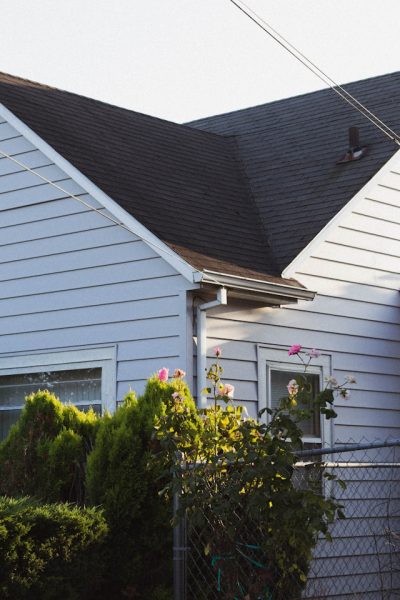As the storm season approaches, it’s essential for homeowners to focus on ensuring the durability of their roofs. The rise in both the frequency and severity of storms highlights the significance of being prepared. Properly fortifying your roof against storms can help you avoid damage and expensive repairs. Here are ten valuable suggestions from experts to assist you in safeguarding your home.

1. Conduct Regular Roof Inspections
Regular inspections play a crucial role in preserving your roof’s strength. Detecting and fixing issues early can prevent them from escalating into major concerns. During an inspection, look for damaged shingles, indications of water damage, and any debris accumulation. Don’t overlook checking the flashing around chimneys and vents. Following a checklist can aid you in keeping track of these tasks. It’s recommended to perform inspections at least twice a year, in the spring and fall seasons. If you’re unsure about what to look for, consider hiring a storm damage roofer for an inspection, as their expertise can uncover hidden issues that may not be apparent to an untrained eye.
2. Trim Excess Tree Branches
Overhanging tree branches pose a threat to your roof during storms. Strong winds can cause branches to break off and harm your shingles or tiles. Regularly trimming these branches can significantly lower this risk factor. If tackling this task appears challenging, investing in the services of an arborist could be a wise decision. Trees that grow too close to your house might act as pathways for pests to reach your roof. It’s important to trim back the branches to prevent animals from making themselves at home on your roof. A well-kept yard not only enhances the appearance of your property but also adds an extra layer of security for your home.

3. Reinforce Roofing Materials
When it comes to roofing, choosing the right materials is crucial. Metal roofing stands out for its durability and ability to withstand harsh weather conditions. If you’re thinking about upgrading, seek advice from a metal roofing company to explore storm-resistant options for your residence. While the initial cost may seem high, it can save you money and stress in the long term. Consider alternatives such as asphalt shingles or clay tiles that are built to endure severe weather conditions. Each material has its pros and cons, so pick one that suits both your climate and budget. Adding fasteners to reinforce existing roofing can also offer extra stability during strong winds. Additionally, if you’re considering a Metal Roof Replacement, consult with a professional to ensure it aligns with your specific needs and local building codes
4. Secure Loose Shingles and Tiles
Addressing loose shingles and tiles before a storm arrives is crucial, as they are common culprits of roof damage during inclement weather. Using top-quality fasteners is key to keeping them securely in place, preventing water damage, and maintaining the integrity of your roof. Make sure to inspect your roof for any missing shingles or tiles following a storm and replace them promptly. Damaged areas could serve as entry points for water, potentially causing leaks and structural issues. By maintaining the surface of your roof, you can ensure its durability against weather conditions. In regions prone to high winds, it’s advisable to use adhesive strips in conjunction with nails to securely fasten the shingles.
5. Clean and Maintain Gutters and Downspouts
Keep your gutters and downspouts clean and well-maintained to prevent water damage and roof leaks. Clearing out any debris from gutters and downspouts allows water to flow freely away from the roof, safeguarding your home. Regular cleaning before storm season can help protect against water-related issues. Neglected gutters may accumulate debris, leading them to detach from the roof and cause harm. Installing gutter guards can help reduce debris buildup. Additionally, ensure that downspouts direct water at least three feet away from your foundation to prevent basement flooding – effective water management around your property is vital for storm-proofing efforts.
6. Install Storm Shutters
Consider installing storm shutters, as they can shield both your roof and windows from airborne debris during storms. There are various types, such as roll-down, accordion, and panel shutters; choose one that complements your home’s aesthetics and fits within your budget. Installing storm shutters can be a lifesaver during severe weather conditions. These shutters also offer an extra layer of security against break-ins, making them a valuable long-term investment for your home. It’s essential to keep the shutters maintained and ready to deploy when there’s an approaching storm. Practicing installing and removing the shutters in advance can save you time during emergencies.
7. Ensure Proper Attic Ventilation
Ensuring proper ventilation in your attic is crucial for maintaining the health of your roof. Good attic ventilation helps regulate temperature and moisture levels, preventing heat buildup and condensation. Enhancing ventilation can be as easy as adding vents or fans, ensuring that your roof stays in top condition year-round. Poor ventilation can lead to issues like mold growth and wood rot, which compromise the integrity of your roof. In hot climates, adequate ventilation helps reduce cooling expenses by releasing trapped heat. Make sure that vents are unobstructed by insulation or other objects for optimal airflow. A balanced ventilation system not only prolongs the lifespan of your roofing materials but also enhances overall comfort in your home.
8. Use Impact-Resistant Roofing Materials
Opting for impact-resistant roofing materials is a wise choice to protect your home from hail and debris damage. Consider using options like impact-resistant shingles or tiles that may come with a higher initial cost but offer lasting protection and peace of mind. Choosing impact-resistant roofing could lead to savings on insurance premiums, making it a wise financial decision. In regions prone to severe weather conditions, this type of roofing can reduce the need for frequent repairs. Manufacturers provide warranties for impact-resistant materials, indicating their strength and dependability. Seek advice from an expert to select the most suitable materials based on your specific requirements and local climate.
9. Apply Roof Sealant
Applying roof sealant is an effective way to enhance protection against water infiltration. The process of applying sealant is simple and can be completed over a weekend. Make sure the roof surface is clean and dry before applying the sealant for the best results. This additional step can significantly improve your roof’s longevity. Sealants also shield against UV damage, prolonging the lifespan of your roofing materials. Opt for a sealant that matches your roof type for optimal performance. Reapplying sealant regularly is essential to maintain its protective qualities. Some sealants not only enhance water resistance but also boost the energy efficiency of your residence.
10. Schedule Professional Inspections
Scheduling professional roof inspections ahead of storm season is a preventative measure you should prioritize. Professionals have an eye for detecting issues that homeowners may miss out on noticing themselves. Annual inspections allow you to address concerns before they turn into major problems. Professional roof inspections often involve detailed reports and photos, giving a comprehensive assessment of the condition of your roof. They may also suggest specific repairs or upgrades to improve its resistance to storms. Establishing a rapport with a roofing expert ensures dependable service. Having confidence that your roof is being handled by professionals who are prepared for any weather conditions brings peace of mind.
Conclusion
In summary, ensuring your roof is storm-resistant is crucial for safeguarding your home against severe weather conditions. By adhering to these recommendations, you can reduce damage and maintain the quality of your roof. Remember, taking proactive steps can help you avoid significant repairs and provide reassurance during stormy seasons. When needed, consider seeking assistance from professionals and stay vigilant for any challenges nature presents. For more information and helpful resources on protecting your home from storms, refer to FEMA’s guide on preparing for disasters. Stay safe and be prepared!

